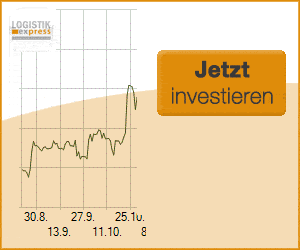Logistics Manager Analysis: Design & Build… at your service
The amount of design and build warehouse space over 100,000 sq ft taken up has dropped back seven per cent so far this year based on provisional data as at the end of August 2019, according to Colliers’ Andrea Ferranti. “But it is up considerably from this time five years ago when D&B take up was 35 per cent of the total.” Liza Helps investigates.
Over the years D&B has generally grown incrementally, Alan Sarjant of Prologis notes: “Whereas in 2007, 70 per cent of new build warehouses were speculative, today that figure is a round 54 per cent.”
“It is important to note,” says Simon Lloyd of Cushman & Wakefield, that: “sometimes one or two deals can distort the statistics.” It is a general point that the majority of D&B deals do tend to be at the larger end of the spectrum.
In the first half of the year according to CBRE there were 46 deals totaling 12.872 million sq ft. Of that 7.019 million sq ft was D&B (54.53 per cent), 3.622 million sq ft (28.14 per cent) was new speculative developments and 2.231 million sq ft (17.33 per cent) was modern second-hand stock. CBRE Research noted that there were six deals in excess of 500,000 sq ft – all bar one was D&B.
Amazon has been one of the most prolific players, opting for D&B on two schemes with a 1.752 million sq ft pre-let on Sladen Estates and Peverill Securities’ Summit Park in Mansfield and a pre-let of 730,715 sq ft at Verdion’s iPort Phase II in Doncaster. Avison Young advised on the Summit Park deal. The developers have now got the facility under construction with completion due in July 2020. It will have up to 20m eaves, high specification office, secure yard, generous car and trailer parking and a BREEAM rating of ‘Very Good’.
The development is funded by a major institutional investor is located off the Mansfield and Ashfield Regeneration Route (MARR) and has stood empty for almost ten years waiting for a requirement of this size to come along. Furthermore, Amazon has been rumoured to be negotiating another D&B deal with Stoford for a 300,000 sq ft plus warehouse in Redditch.
The other D&B deals in the first half of the year include US fashion giant VF Corporation – owner of Vans, Timberland and North Face – taking a new 15-year lease on 578,620 sq ft at the Mountpark Bardon scheme in Leicestershire. The second phase of Mountpark Bardon, a 72.5-acre site, had planning to deliver 1.3 million sq ft of logistics space. It benefits from a completed £4.5 million infrastructure programme and the site can deliver design and build units from 200,000 sq ft within a 40-week programme. DTRE and CBRE act for Mountpark on Mountpark Bardon II.
DHL has a 20-year lease on the 538,280 sq ft DC in Manton Wood
DHL entered into a 20-year year lease on 538,280 sq ft at Manton Wood in Worksop and Europa took 525,000 sq ft at the Midlands Logistics Park in Corby.
Those five deals alone accounted for 4,124,615 sq ft of warehouse space – 32 per cent of the total amount of space taken up in the first half of 2019. “The dip in the levels of D&B, certainly for the first half of the year, has been due to a reluctance to commit from occupiers because of the uncertainty surrounding Brexit,” says Ferranti.
Brexit-related caution
In its latest Prime Logistics Bulletin, Gerald Eve notes: “The total volume of space currently under construction is [at the end of Q2 2019] 22.7 million sq ft, made up of 37 per cent speculative and 63 per cent purpose-built (D&B) floor space. This is the lowest volume of prevailing space under construction since Q2 2018 and is perhaps illustrative of Brexit-related caution and the continuing shortage of land in key markets.”
That said Ferranti and others have noticed an uptick in take up levels from the first quarter of the year across the board from occupiers – and retailers in particular – as the demands for restructuring the supply chain in order to meet the needs from ecommerce grow.
JLL’s Ed Cole says: “E-commerce continues to drive demand for logistics floor space as retailers look to improve their supply chains to meet growing consumer demand for goods to be delivered anytime and anywhere and we don’t se that trend slowing.”
Retail accounted for 50 per cent of total Grade A take-up, according to the latest JLL research. Logistics companies took a 34% share and manufacturers 4%. The remaining 12% was taken up by others, such as IT companies.
It is a view reiterated by Andrew Jackson of Avison Young: “[Take-up] activity has been particularly dominated by the e-commerce sector.”
“Distribution is continuing to benefit from the structural changes in the retail sector, which is proving somewhat resilient to the economic challenges, supported by the level of ecommerce activity this year. This is perhaps unsurprising given that some projections show ecommerce making up 50 per cent of retail activity within 10 years.”
There has been an increase in the amount of speculative space available this year, which could contribute to the reduction in D&B taken up recently.
According to Avison Young Research: “A significant amount of speculative space has completed over the past 12 months providing wider choice in the market in terms of location and size of unit and subsequently take-up has increased to 23 per cent of total take-up this [half] year. As a result, occupiers have taken less design and build product compared to the last two years.”
Prologis’ DC535 at DIRFT will be available for occupation from Q4 2019
This increased speculative development means supply levels (including space under construction at the end of the H1 2019) have risen to 29.5 million sq ft. This amounts to some 16 months take-up based on average demand for the past five years.
Speculative supply currently makes up 58 per cent of total supply (36 per cent completed and 22 per cent under construction) while second-hand space accounts for the remaining 42 per cent of the total. The size of speculative development has also increased over the past year and includes building such as IM properties’ 532,000 sq ft warehouse at Hinckley Park, adjacent to Junction 1 of the M69 motorway.
Hinckley 532 has a target completion date of the last quarter of 2019. The new Grade A, cross-dock unit, will have 18m eaves as well as 70 dock and eight level doors, a 50kn floor loading, two 55m yards and 545 car and 232 HGV parking spaces. There is a power supply of 2MVA installed with up to 8MVA available. Sustainability wise it is expected to achieve an EPC A rating as well as BREEAM Very Good.
There is also Prologis’ 535,000 sq ft warehouse known as DC535 at Prologis RFI DIRFT. This latest will be ready for occupation in October 2019. The cross-docked facility will have two 55m yard and internally will boast 21m eaves. It will also have 78 dock and seven level access doors, 147 trailer and 415 car parking spaces. It has a power supply from 1.5Mva. In addition, it has been designed for and capable of expansion up to 940,000 sq ft.
Its environmental specification is, of course, second to none with a BREEAM ‘Very Good’ rating and an EPC rating of A. It has rainwater harvesting and Brise Soleil to reduce solar gain. In addition, it has 15% roof lights providing natural daylight and LED lighting to external yard areas and doors as par for the course as well as LED office lighting with automatic movement and daylight controls.
Prologis says the building boasts energy cost savings of up to £283,044.67 a year when compared to an existing building (pre-1995) and £49,173.34 a year compared to a typical new build. Joint letting agents are Burbage Realty, JLL and Savills.
“While there are certainly larger speculative warehouses being built,” says Cole, “we still get requirements up to 1 million sq ft, such as the Wayfair deal in Lutterworth.”
Location, location, location
St. Modwen is speculatively developing three units in Gloucester
It is not just a size issue, Andrew Smith of Carter Jonas says: “It all depends on a where you are in the country – there is a better supply of speculative space say in the East and West Midlands than perhaps somewhere else.
“Invariably occupiers find that immediately available buildings are never quite the right size nor in quite the right location for that perfect fit.”
Thre are plenty of instances where an occupier has snapped up a speculative building prior to completion and then adapted it to fit their needs or where an occupier has taken a much larger building than immediately needed in order to meet a time demand.”
Lloyd agrees: “Occupiers often make compromises and adapt existing buildings.”
Jonathan Wallis of Tritax Symmetry says: “D&B is driven by timing, specification and availability; get any of these wrong and it gets expensive. Start the process early and it puts you in the best position to make your own decisions rather than being forced.”
The whole D&B process is much more sophisticated than it was 20 years ago says Smith. “Deliverability is much tighter, and developers have got better at managing the D&B process – from planning and infrastructure works to having contractors at the ready; the whole supply chain is lined up to deliver without delay.”
Many developers, he goes on to note, already have backing from sovereign wealth or large pension funds meaning that once an occupier is identified and terms agreed construction can start almost immediately.
It is quite common to see sites being brought forward with smaller speculative units to start and larger plots of land held back for D&B.
St Modwen is speculatively developing three units totalling 173,000 sq ft at its 58-acre St Modwen Park Gloucester. Pete Davies of St Modwen says: “In addition to these first three units we are ready to deliver build-to-suit opportunities of up to 400,000 sq ft.”
At present the logistics sector is extremely popular and there is a lot of money seeking to invest. This means that for occupiers D&B does not have to be expensive.
Amazon opted for a pre-let of 730,715 sq ft in Doncaster
Will Cooper of Savills says: “If done on an open book basis a standard building would have a rent X and that would be the base level with changes such as additional doors as an optional extra priced Y. It is all about timing, if the occupier is talking to the developer at the right time, things can be done in the right order at no additional cost. It is much easier and cheaper to change things before they happen than after the event. If doing a pre-let there are no letting voids so everyone aught to win one way or another.”
When it comes to rent levels says Lloyd, “these are not necessarily higher, it depends on how specialised a building is, if not particularly bespoke then the developer/fund can be more flexible.”
In terms of lease lengths, Cole says: “Lease terms are converging – it used to be that D&B was very much longer with specialised D&B building looking at 25 – 30 year leases. It now depends on how bespoke a building is and how easily it looks to be re-let in the future. In general, add another five years onto a D&B but you are likely to get a longer rent-free period for fit out.”
There have been D&B deals done at 15 years and less.
“Ultimately,” says Cooper, “from a developer perspective, if they have to take the building back again, how bespoke it is will dictate the terms upon which it is leased.”
Cooper was involved with the pre-let of 661,201 sq ft to the Co-op at Tritax Symmetry’s Symmetry Park Biggleswade earlier this year. For a highly bespoke property the lease was only 20-years because both occupiers started talks early.
The development will comprise a new purpose-built RDC with 15m eaves and a gross internal floor area of 661,000 sq ft on a site of c.50 acres, representing a low site cover of c.35 per cent. This RDC also includes ancillary office space as well as significant parking and service yards and will also benefit from significant capital investment by the occupier, including high levels of fit-out to include frozen, chilled and ambient food storage zones within the RDC.
This feature originally appeared in the October 2019 edition of Logistics Manager: click here to subscribe to the print edition












